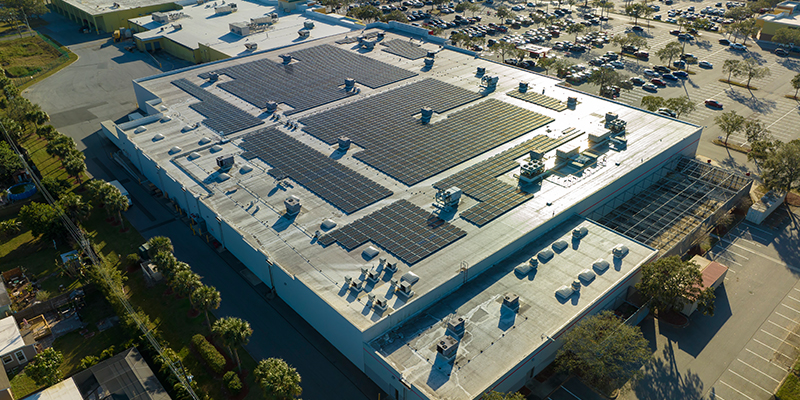Impending recession expected to be grinding, enduring and especially difficult for Class B and C office space
With all signs pointing to an economic recession – presumably arriving midyear or Q3 – how can the commercial real estate community best plan for this event, what lessons can be learned from similar downturns, how long will this period last and which asset classes will be particularly hard hit? Recessions cause hardships and are never a good thing, but what silver linings and opportunities will be available to savvy investors and progressive companies? Offering their insights and perspectives on this topic are Anirban Basu, chairman and CEO of Sage Policy Group and Jennifer LeFurgy, Ph.D., vice president of knowledge and research for NAIOP.
An already-challenging real estate environment is poised to get worse
Jennifer LeFurgy (JL): The NAIOP CRE Sentiment Index is predicting a gradual slowdown this year in new development, as well as sales and leasing activity across the board, but we do not foresee a catastrophic event. The commercial office sector will be particularly impacted with projects paused, foreclosures and slower dealmaking, which will be exacerbated by rising construction costs and labor issues. Guidance is calling for a difficult first quarter, followed by a slow, but gradual pickup in late Q2 or early Q3. Research indicates that Class B and Class C buildings, particularly those located in urban areas, will face considerable challenges due to the number of employees still working remotely and the flight to quality trend prevalent among many tenants. An additional complication is the slowdown in the development approval process and difficulty in obtaining entitlements. As interest rates continue to rise, the office sector becomes increasingly risky, and we can expect to see more adaptive reuse projects.
The NAIOP Industrial Space Demand Forecast sees absorption rates declining into 2024. This is mostly due to the increasing cost of capital rather than decreasing demand. Even Prologis has predicted that warehouse starts will drop this year to a seven-year low despite a growth in rents. We do see a light at the end of the tunnel this year and our members are generally optimistic when looking at 2023 in its totality.
Anirban Basu (AB): We expect 2023 to be quite challenging for the economy as a whole and the commercial real estate sector in particular. Clearly, we have not yet entered a recessionary phase at this time, as unemployment claims remain low and consumers have been gorging on purchases, but the tea leaves are predicting a darker place economically. The consumer savings rate has fallen to a multi-year low and, last year, with Americans purchasing manufactured items at a frenetic pace before shifting to service-related items including travel and leisure. Now they are increasingly tapped out. The Federal Reserve will be hard pressed to admit it, but they need unemployment to rise significantly in order to restore economywide inflation at 2%. At the end of 2022, unemployment stood at a slender 3.5%. The central bank’s benchmark interest rate started last year at roughly 0%. It is now above 4% and expected to rise further. That has implications for the broader economy, of course, as well as for interest rate-sensitive segments like commercial real estate. The environment will not get as bad as the late-1980s and certain asset classes will have a good year – such as industrial/warehouse – despite what you might be reading about Amazon no longer seeking an abundance of new capacity.
Recession will impact each asset class in a different manner
AB: If you are looking for a comparable period, then the early 1980s might be a good start but be careful to take things too far since that was a double-dip downturn recession also caused by rampant inflation, followed by a rise in interest rates. In the present day, inflation arrived in spring 2021, but the Federal Reserve did not detect an immediate risk and, looking back, waited too long to start hiking interest rates. The initial rate increase did not occur until March 2022. By that point, excess inflation had been in place for the better part of a year. Having waited too long, monetary policymakers have had to raise rates more quickly to make up for lost time. The impact on the economy has and will be jarring. I expect the economy to grind toward increasing weakness, eventually finding its way into recession. Trophy buildings will remain in high demand given the existence of highly successful companies that dominate their segments. There will also be plentiful opportunities for adaptive reuse, but that reuse often requires properties to change hands and a more attractive financing environment than presently exists.
JL: Compared to other recent downturns, I believe we are facing a relatively minor dip but there are lessons to be learned. Investors with extra liquidity on-hand will have multiple opportunities to acquire foreclosed or distressed assets and there will be bargains for those that can take advantage of them. In the commercial real estate industry, there is an ongoing war for talent with rampant job hopping and companies looking for creative ways to retain valuable employees. Making matters worse, demographic shifts are causing the labor pool to shrink and therefore there are fewer professionals available for careers in real estate.
Expected downturn is directly tied to the strength of the labor market
AB: There is an abundance of research that suggests it takes 12-18 months of monetary tightening to effectively dampen excess inflation. In June 2022, consumer inflation was running at 9%. We appear to have peaked, but inflation remains well above the Federal Reserve’s 2% target. While many of the worst supply chain issues are now in the past, wage pressures persist. Moreover, construction firms continue to complain about equipment and component shortages and delays, including for switchgear. Worker compensation has been expanding in the range of 5% on a year-over-year basis. To restore inflation to 2%, those increases probably need to come down to the 3-3.5% range. The implication is clear. The Federal Reserve has more work to do, which means that interest rates are headed even higher. It may be that monetary policymakers will begin cutting rates later in 2023 or in 2024 and 2025. In any case, there is a considerable amount of economic pain immediately in front of us.
AB: Recessions, of course, cause hardships but it is important to search for the silver linings. It is often said that one should never waste a good recession. Downturns force businesses to rethink their corporate strategies, to escape unproductive segments, and to place a greater share of resources in areas of promise.
JL: By its nature, commercial real estate is a cyclical business and downturns present the opportunity to hit the reset button and recalibrate. The industry has dealt with recessionary periods countless times and, at this point, smart organizations are ready for it and plan for the occurrence. One positive we have seen is the slow trickle back to the traditional workplace, which started after Labor Day. Companies are making a concerted effort to bring people back at least two days per week and, given the recent spate of layoffs, employers are slowly gaining the upper hand and more leverage which enables them to dictate policy.








